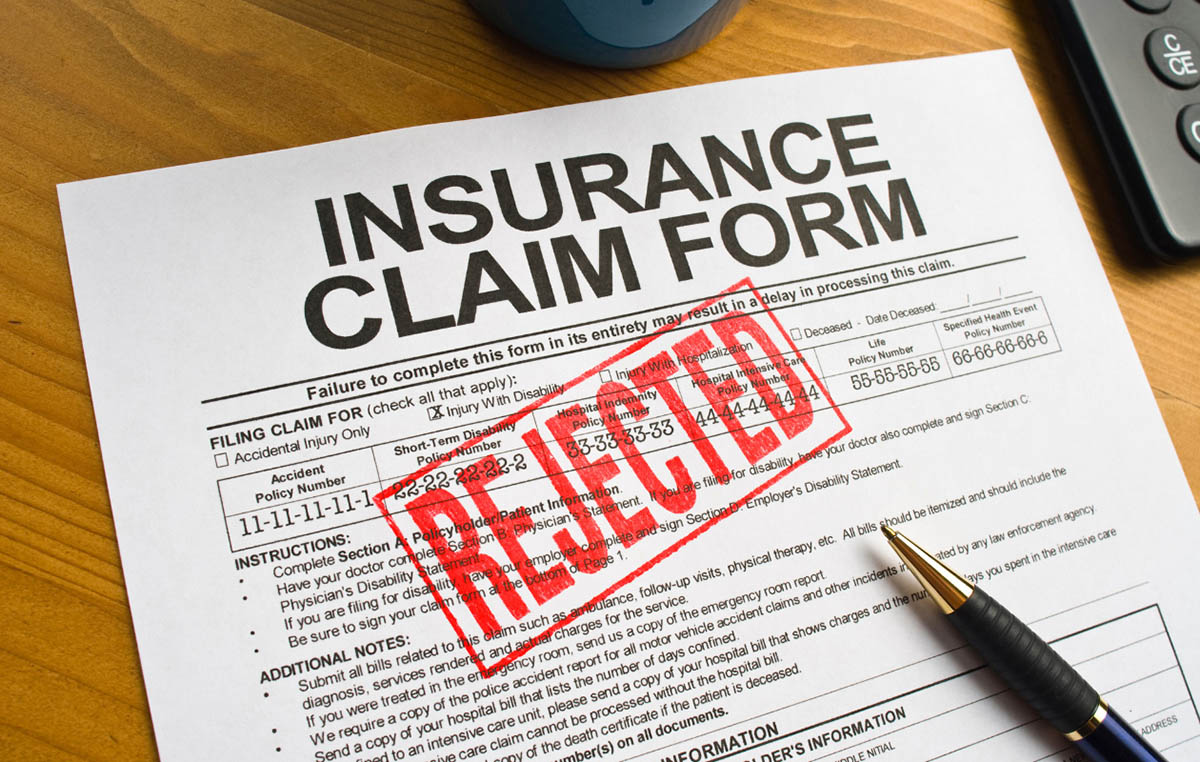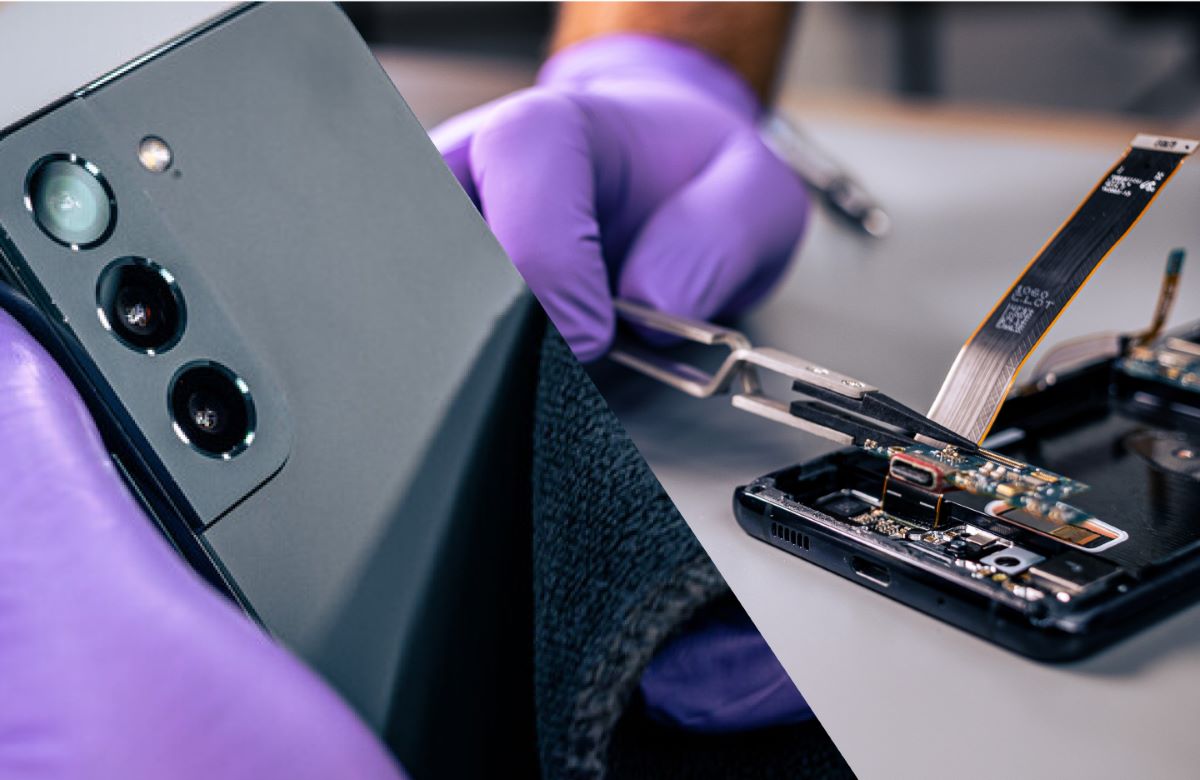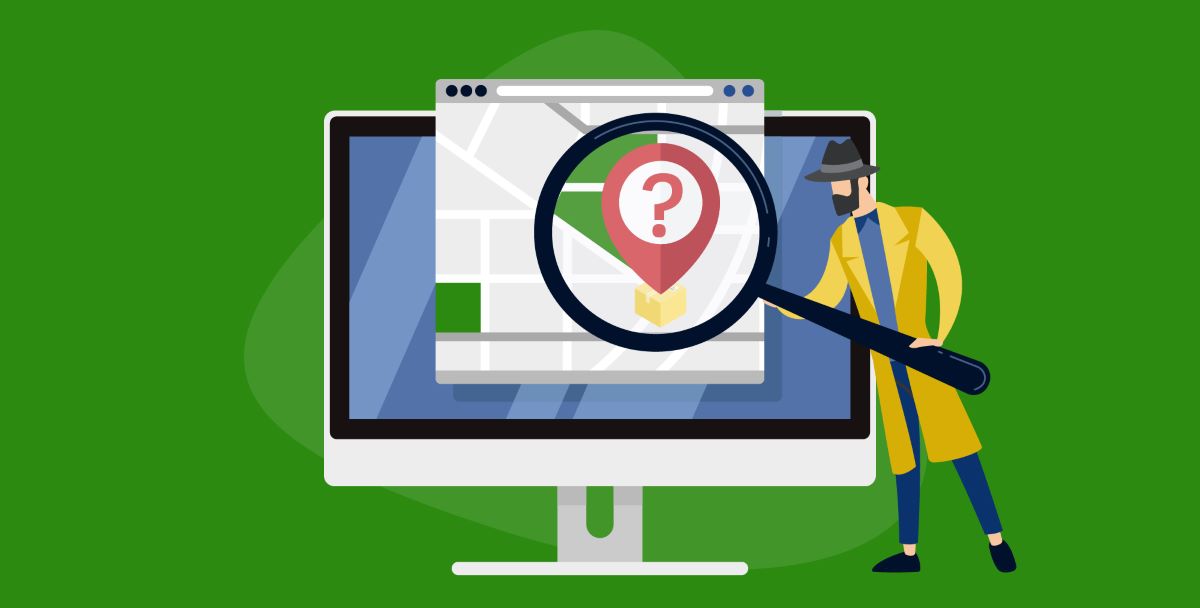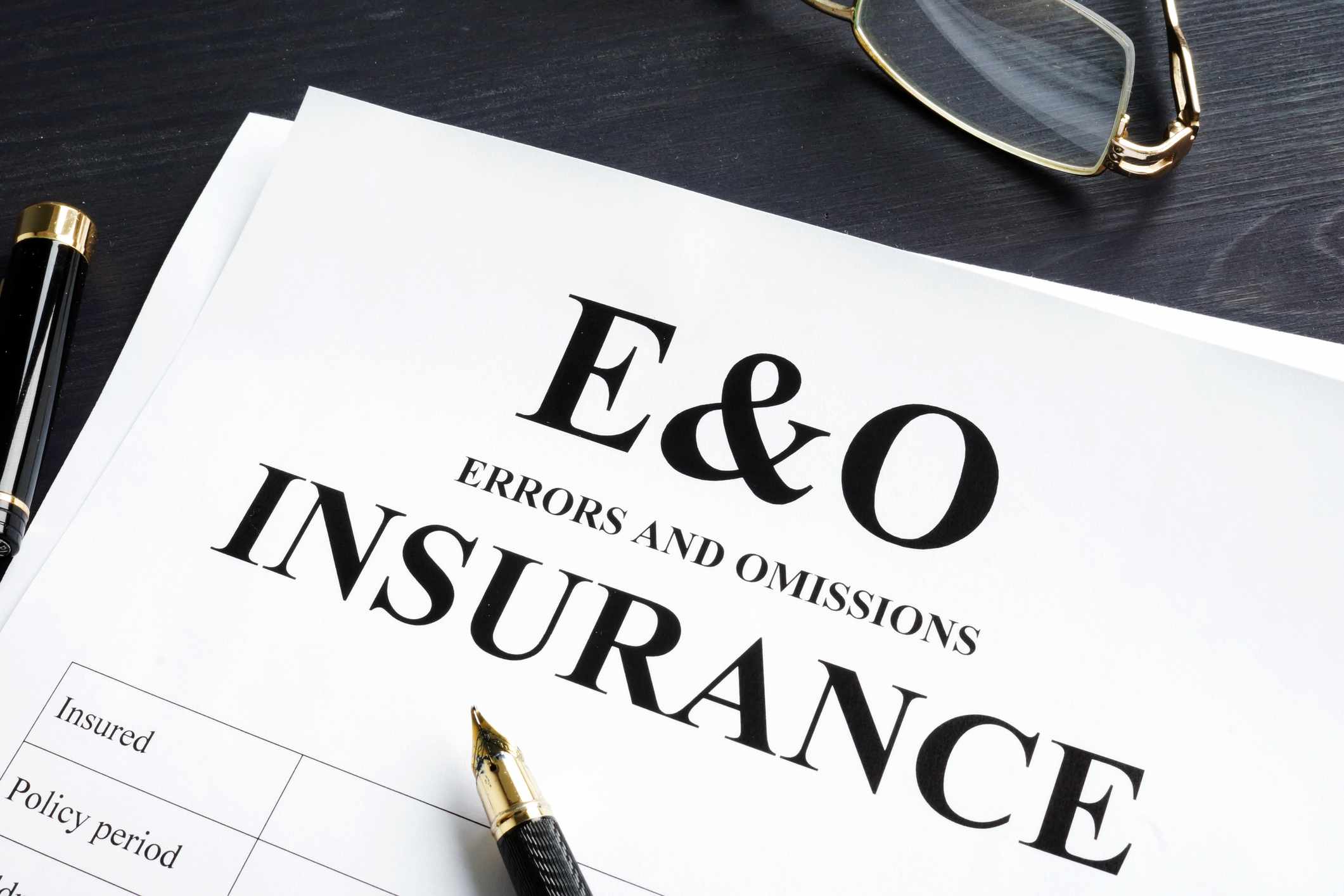Home>Finance>How To File A Claim On Someone Else Auto Insurance


Finance
How To File A Claim On Someone Else Auto Insurance
Published: October 6, 2023
Learn how to file a claim on someone else's auto insurance and get the financial support you need. Discover expert tips and guidance on navigating the process effectively.
(Many of the links in this article redirect to a specific reviewed product. Your purchase of these products through affiliate links helps to generate commission for LiveWell, at no extra cost. Learn more)
Table of Contents
- Introduction
- Step 1: Gather all necessary information
- Step 2: Contact the insurance company
- Step 3: Provide details of the incident
- Step 4: Follow up with the insurance company
- Step 5: Communicate with the other party involved
- Step 6: Document all relevant information and records for your claim
- Step 7: Seek legal advice if necessary
- Conclusion
Introduction
Getting into an auto accident can be a stressful and overwhelming experience. Besides dealing with any injuries or vehicle damage, you may also have to navigate the complex process of filing a claim on someone else’s auto insurance. Whether the accident was caused by the negligence of another driver or due to a hit-and-run incident, knowing how to file a claim can help you get the compensation you deserve.
In this article, we will guide you through the step-by-step process of filing a claim on someone else’s auto insurance. From gathering necessary information to seeking legal advice if needed, we will provide you with the essential information to streamline the process and increase your chances of a successful claim.
It’s important to remember that each insurance company may have slightly different procedures and requirements for filing a claim. However, the general steps outlined here can act as a helpful guide regardless of the specifics of your situation.
Before we dive into the details, it’s crucial to understand that filing a claim on someone else’s auto insurance implies that you are not at fault for the accident. If you are found to be partially or fully responsible for the incident, your own insurance coverage might come into play. Additionally, it’s always recommended to consult with an attorney who specializes in personal injury claims to ensure you understand your rights and can optimize the claim process.
Step 1: Gather all necessary information
Before you can start filing a claim on someone else’s auto insurance, it’s important to gather all the necessary information related to the accident. This will help streamline the process and provide the insurance company with the details they need to assess your claim. Here are the key pieces of information you should collect:
- Driver’s information: Write down the other driver’s name, contact information, and insurance company details. This includes their policy number and contact information for their insurance provider.
- Accident details: Take note of the date, time, and location of the accident. Be as specific as possible, including the intersection or street names. Use your smartphone or a camera to take photos of the scene, capturing any relevant details such as skid marks, road conditions, and damage to vehicles.
- Witnesses: If there were any witnesses to the accident, obtain their contact information. Their statements may be crucial in supporting your claim.
- Police report: If law enforcement was involved, request a copy of the police report. This document can provide important details and act as evidence for your claim.
- Medical records: If you sustained any injuries, keep records of all medical treatments received. This includes hospital visits, doctor appointments, test results, and invoices from medical providers.
- Vehicle information: Note the make, model, year, and license plate number of the vehicles involved in the accident. If possible, take pictures of any damage to both vehicles.
- Insurance policy information: Collect your own insurance policy details, including your policy number and contact information for your insurance company.
By having all this information readily available, you will be well-prepared to initiate the claims process and provide the necessary details to the insurance company.
Step 2: Contact the insurance company
Once you have gathered all the necessary information, it’s time to contact the insurance company of the at-fault driver. This step is crucial as it establishes a line of communication and notifies the insurance company of your intention to file a claim. Here’s what you should do when reaching out to the insurance company:
- Find the contact information: Locate the insurance company’s contact information on the insurance card provided by the at-fault driver. Alternatively, you can search online or contact your own insurance company for assistance in obtaining the necessary details.
- Call the insurance company: Make a phone call to the insurance company’s claims department. Introduce yourself and explain that you are looking to file a claim for an accident involving one of their policyholders.
- Provide the necessary details: Be prepared to provide all the information you gathered in Step 1. This includes the basic accident details, driver information, and any documentation you have, such as the police report or witness statements.
- Ask about the claims process: Inquire about the specific steps you need to follow to file the claim. Each insurance company may have its own procedures, so it’s important to understand what is expected of you.
- Document the conversation: Take notes during your conversation with the insurance company representative. Write down their name, the date and time of the call, and any important details or instructions they provide.
- Ask for a claim number: At the end of the call, ask for a claim number. This will serve as a reference for future communications regarding your claim.
Remember to remain calm and polite throughout the conversation. Keep in mind that insurance companies handle numerous claims daily, so it’s important to provide all the necessary information in a clear and concise manner. If the claims representative requests any additional documentation, ask for specific instructions on how to submit it.
By reaching out to the insurance company promptly and providing all the required details, you will set the foundation for the claims process. This step ensures that both parties are aware of the claim and can proceed accordingly.
Step 3: Provide details of the incident
After contacting the insurance company, you will need to provide a detailed account of the incident to support your claim. Clear and accurate information will help the insurance company assess the situation and determine liability. Here’s what you should do when providing details of the incident:
- Write a statement: Take some time to write a detailed statement about the accident. Include the date, time, and location of the incident, as well as a step-by-step description of what happened. Be as thorough as possible, including any relevant factors such as road conditions, weather, and traffic conditions.
- Stick to the facts: While it’s important to provide a thorough account of the incident, avoid speculation or assumptions. Stick to describing what you saw, heard, and experienced firsthand, without embellishing or guessing the motivations of the other driver.
- Include witness statements: If you obtained statements from witnesses, include them in your account. Quote their exact words if possible, or summarize their observations. This can add credibility to your claim.
- Attach supporting documentation: Include any supporting documentation you gathered in Step 1, such as photos of the accident scene or damage to the vehicles, the police report, or medical records if applicable.
- Be accurate and honest: It is essential to provide accurate and honest information. False or misleading statements can jeopardize your claim and potentially have legal consequences.
When submitting your statement and supporting documentation to the insurance company, be sure to follow any specific instructions they provided during your initial contact. This may include submitting the information online, via email, or by regular mail.
Remember, the details you provide will be used to determine the outcome of your claim. Therefore, make sure to take your time, proofread your statement for accuracy and clarity, and include any relevant information that can support your position.
Once you have submitted the necessary details, you may need to wait for the insurance company to review your claim. Keep track of any communication or updates from the insurance company and be prepared to provide additional information or answer any questions they may have.
Step 4: Follow up with the insurance company
After providing the initial details of the incident, it’s important to maintain regular communication with the insurance company throughout the claims process. Following up ensures that your claim stays on track and allows you to address any additional information or inquiries that may arise. Here are some key steps to follow when following up with the insurance company:
- Keep a record: Maintain a detailed record of all communication with the insurance company. Note the date, time, and content of each conversation or correspondence.
- Ask for updates: After submitting your initial claim, it’s reasonable to inquire about the progress of your case. Contact the insurance company and ask for updates on the status of your claim.
- Provide additional information: If the insurance company requests any additional information or documentation to support your claim, provide it promptly and ensure it meets their specifications.
- Be responsive: If the insurance company reaches out to you, respond as soon as possible. Prompt and clear communication helps keep the claims process moving forward smoothly.
- Document all communication: Whenever you communicate with the insurance company, document the details of the conversation. This includes the name of the representative you spoke with, any actions or agreements made, and any instructions they provided.
- Ask questions: If you have any questions or concerns about the claims process, don’t hesitate to ask the insurance company for clarification. Understanding the process can help alleviate any confusion or stress you may have.
- Stay organized: Keep all your claim-related documents, records, and correspondence in one place for easy reference. This helps you stay organized and ensures you have all the necessary information on hand.
Regularly checking in and following up with the insurance company shows your dedication to the process and helps keep your claim a priority. Remember, each insurance company operates differently, and the time it takes to process claims can vary. Patience and persistence are key.
If you encounter any difficulties or experience prolonged delays, consider reaching out to a supervisor or escalating the matter within the insurance company. In some cases, it may be necessary to seek legal advice to ensure your rights are protected.
Step 5: Communicate with the other party involved
While your primary point of contact during the claims process will be the insurance company, it can also be beneficial to communicate with the other party involved in the accident. Establishing a line of communication with them can help clarify any discrepancies, exchange information, and potentially reach a resolution without involving legal proceedings. Here are some important steps to take when communicating with the other party:
- Exchange contact information: If you haven’t already, exchange contact information with the other driver involved in the accident. This includes their name, phone number, and email address.
- Maintain a polite and respectful tone: When communicating with the other party, conduct yourself in a respectful and professional manner. Keep emotions in check and focus on discussing relevant information related to the accident.
- Discuss the incident: Share your perspective of the accident and listen to the other party’s version as well. Avoid placing blame or getting into confrontational discussions. The purpose of this communication is to clarify facts, not assign fault.
- Exchange insurance information: Ensure that both parties have exchanged insurance information accurately. This includes providing each other with the insurance company name, policy number, and contact details.
- Clarify responsibilities: If there is any confusion regarding responsibilities or liabilities, discuss it with the other party calmly. Seek to find common ground and agreement if possible.
- Keep a record: Document all communication with the other party, including dates, times, and summaries of the conversations. This can serve as valuable evidence if needed.
- Consult with your insurance company or attorney: If the other party becomes uncooperative or if you encounter any difficulties in communication, consult with your insurance company or attorney for guidance on how to proceed.
While it’s important to exercise caution when engaging in direct communication with the other party, it can help resolve minor disputes or misunderstandings without escalating the situation. However, if the conversation becomes heated or unproductive, it is advisable to discontinue direct communication and rely on your insurance company or legal representation to handle the matter.
Remember, the primary purpose of communicating with the other party is to exchange necessary information and potentially reach a mutually agreeable resolution. Stay focused and professional in your interactions to avoid any misunderstandings or unnecessary conflicts.
Step 6: Document all relevant information and records for your claim
Proper documentation is crucial when filing a claim on someone else’s auto insurance. It helps support your case, provides evidence of damages and injuries, and ensures that you have all the necessary information at your disposal. Here are the key steps to take when documenting relevant information and records for your claim:
- Keep a thorough record: Maintain a comprehensive file with all relevant documents related to the accident and your claim. This includes photos of the scene and vehicle damage, medical records, police reports, witness statements, and any correspondence with the insurance company or other involved parties.
- Organize your documents: Sort and organize your documents in a logical manner. Use folders, envelopes, or digital folders to keep everything organized and easily accessible when needed.
- Take photos: Capture images of the accident scene, the involved vehicles, and any visible injuries. These visual records can provide valuable evidence of the impact and damages incurred.
- Keep medical records: Maintain copies of all medical records related to any injuries sustained in the accident. This includes doctor’s reports, medical bills, prescriptions, and any other documentation that supports your claim for medical expenses.
- Retain repair estimates and receipts: If your vehicle requires repairs, keep copies of all repair estimates, invoices, and receipts. These documents demonstrate the extent of the damages and the costs incurred.
- Record lost wages: If the accident has caused you to miss work and experience a loss of income, keep records of your missed workdays, any correspondence with your employer, and any supporting documentation, such as pay stubs or tax forms.
- Document ongoing expenses: If the accident has resulted in ongoing expenses, such as rehabilitation or therapy costs, keep records of these expenses and any supporting documentation to include in your claim.
By documenting all relevant information and keeping records organized, you can present a clear and comprehensive claim to the insurance company. This will help support your case and ensure that you are properly compensated for any damages or injuries sustained.
Remember to regularly update your documentation throughout the claims process. Keep track of any new information, expenses, or correspondence and incorporate them into your records. This will help you stay organized and provide accurate information when needed.
Step 7: Seek legal advice if necessary
While filing a claim on someone else’s auto insurance can often be resolved smoothly, there may be instances where seeking legal advice becomes necessary. If you encounter any complications, disputes, or challenges during the claims process, consulting with an attorney who specializes in personal injury claims can help protect your rights and navigate any legal complexities. Here’s what you need to know about seeking legal advice:
- Evaluate the complexity of your case: If the claim involves significant injuries, disputed liability, or complexities in insurance coverage, it may be wise to seek legal advice. A professional attorney can assess the strengths and weaknesses of your case and provide guidance specific to your situation.
- Find an experienced attorney: Look for a reputable attorney with experience handling personal injury claims and auto insurance disputes. Consider seeking recommendations from trusted sources or researching local law firms that specialize in this area of law.
- Schedule a consultation: Contact the attorney and schedule an initial consultation to discuss your case. This meeting allows you to present the details of your situation, ask questions, and understand the attorney’s expertise and approach.
- Discuss contingency fees: Many personal injury attorneys work on a contingency fee basis, which means they only collect fees if they are successful in obtaining a settlement or verdict on your behalf. Clarify the fee structure during the consultation and ensure it aligns with your expectations.
- Follow the attorney’s advice: If you decide to proceed with legal representation, follow the attorney’s guidance throughout the claims process. They will advise you on the best course of action, negotiate with the insurance company if necessary, and potentially pursue legal action on your behalf.
- Stay informed and involved: While your attorney will handle the legal aspects of your claim, it’s important to stay engaged in the process. Regularly communicate with your attorney, provide requested information promptly, and remain informed of any developments in your case.
Seeking legal advice can help level the playing field when dealing with insurance companies and ensure that your rights are protected. An attorney can guide you through the legal process, provide an objective perspective, and advocate for your best interests.
Remember, every situation is unique, and only a qualified attorney can provide personalized advice based on the specific details of your case. Consult with an attorney to determine if legal representation is necessary and to receive guidance tailored to your circumstances.
Conclusion
Filing a claim on someone else’s auto insurance may seem like a daunting process, but by following the steps outlined in this guide, you can navigate through it smoothly and increase your chances of a successful outcome. Remember, the key to a successful claim is thorough preparation, clear communication, and proper documentation.
Start by gathering all the necessary information related to the accident, including driver details, accident specifics, and any witness statements or police reports. Contact the insurance company promptly and provide them with the required information and documentation. Throughout the process, it is important to maintain regular communication with the insurance company, follow up on the progress of your claim, and provide any additional information requested.
If the need arises, reach out to the other party involved in the accident to exchange information or clarify any discrepancies. Keep a record of all communication and document relevant details, including photos, medical records, repair estimates, and any lost wages or ongoing expenses resulting from the accident. This documentation will support your claim and provide evidence of the damages and injuries sustained.
In some cases, seeking legal advice may be necessary, especially if your claim becomes complex or disputed. Consulting with an experienced attorney can provide valuable guidance, protect your rights, and help you navigate any legal complexities that may arise.
Remember, each claim is unique, and the specific details of your situation may require additional or different actions. Consider the information provided in this guide as a general framework, but adapt it to suit your specific circumstances and the requirements of your insurance company.
By following the steps outlined in this guide and seeking any necessary legal advice, you will be well-equipped to navigate the process of filing a claim on someone else’s auto insurance. Stay organized, stay informed, and advocate for your rights throughout the process. With patience and persistence, you can work towards obtaining the compensation you deserve.














